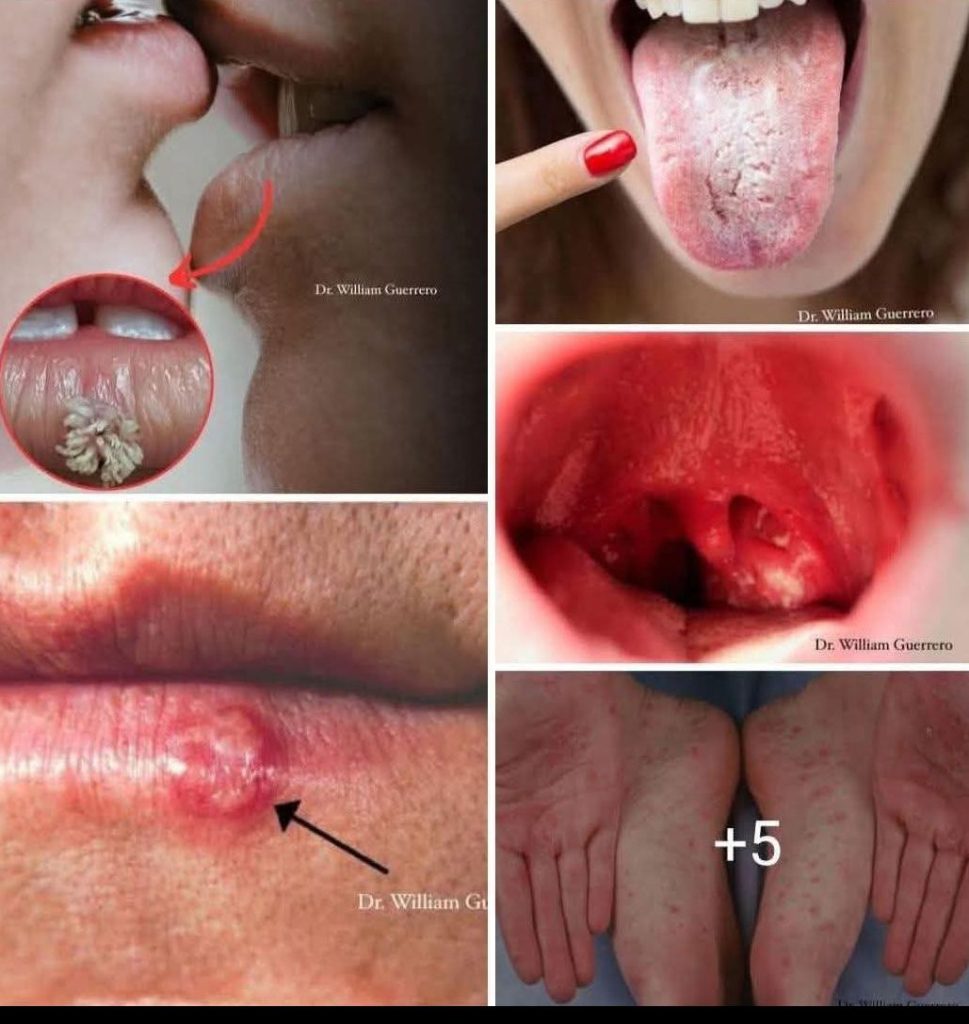Title: Warning Signs He Might Be Carrying a Contagious Infection: What You Should Know Before Kissing
When it comes to intimacy, especially something as common as kissing, we often forget it can come with health risks. Kissing is not always harmless—certain infections can be transmitted through saliva or skin contact. Here are some visible signs that someone might be carrying a contagious infection, particularly sexually transmitted infections (STIs), and why you should stay alert:
1. Warts or Growths on the Lips
One of the images shows a cluster of wart-like growths on the lips. These are classic signs of Human Papillomavirus (HPV), a highly contagious virus that can be transmitted through skin-to-skin contact, including kissing. Some strains of HPV are linked to oral and throat cancers, making it essential to avoid close contact with visible warts.
2. White Coating on the Tongue
A thick, white coating on the tongue may indicate oral thrush, a fungal infection caused by Candida. While not always sexually transmitted, it can be passed through kissing, especially if one partner has a weakened immune system or is using antibiotics.
3. Sores Inside the Mouth or Throat
Redness, sores, or ulcers in the throat or inside the mouth could be symptoms of Herpes Simplex Virus (HSV) or even gonorrhea of the throat. These infections can be spread through oral-genital or oral-oral contact. If someone has recurring mouth sores or complains of throat pain without a cold, take caution.
4. Blisters or Cold Sores Around the Mouth
A clear indication of oral herpes (HSV-1), cold sores appear as fluid-filled blisters around the lips. They are highly contagious, even when not actively blistering. Kissing someone with visible sores can easily transmit the virus.
5. Unusual Rashes on the Hands or Feet
Red patches or rashes on the palms and soles may be signs of secondary syphilis. While more commonly transmitted through sexual intercourse, syphilis can also be spread through kissing if open sores are present in the mouth.
Protect Yourself: What You Can Do
-
Avoid kissing someone with visible sores or warts.
-
Use protection and get tested regularly for STIs.
-
Maintain good oral hygiene and immune health.
-
Encourage open communication about sexual health with partners.
When to See a Doctor
If you notice any of the above signs in yourself or a partner, seek medical advice immediately. Early detection and treatment are key to managing infections and preventing further spread.
Conclusion
Kissing may seem like a simple act of affection, but it can carry risks if one partner has an undiagnosed or visible infection. Pay attention to signs—your health might depend on it.


